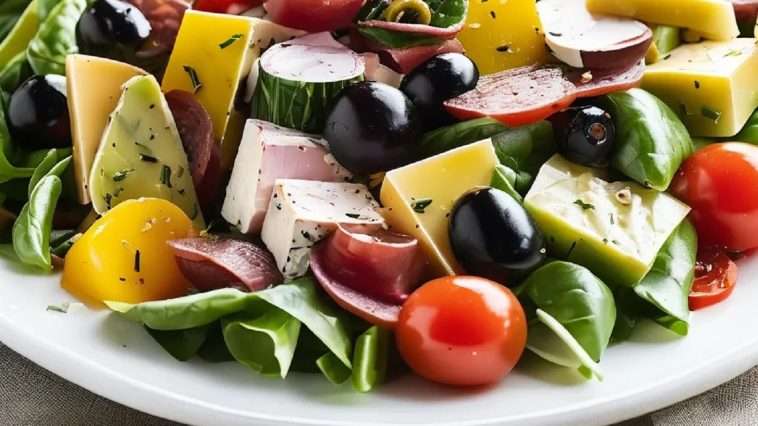Antipasto, which translates to “before the meal” in Italian, serves as a delectable appetizer that sets the stage for the dining experience to come. Originating from Italy, this dish showcases a delightful array of cured meats, artisanal cheeses, olives, marinated vegetables, and a variety of pickled items. Its roots can be traced back to ancient Roman traditions, where simple ingredients were combined to stimulate the appetite and encourage conversation. Over the years, different regions in Italy have contributed their unique flavors and ingredients, making antipasto a beloved culinary tradition around the world.
Why I Love Antipasto Recipe
I love this recipe for its incredible versatility and the way it brings people together. Antipasto is more than just a dish; it’s a celebration of flavors and textures that invites sharing and socializing. Each ingredient has its own story, from the savory prosciutto to the tangy marinated artichokes, and together they create a beautiful mosaic on the plate. This vibrant presentation not only pleases the eyes but also sparks conversation among guests, making it the perfect starter for gatherings, parties, or family dinners.
Moreover, antipasto allows for endless creativity and personalization. You can tailor it to suit your preferences or highlight seasonal produce, which makes every platter feel unique. I enjoy experimenting with different combinations, from adding spicy salami for a kick to including creamy burrata for a touch of indulgence. This adaptability means that every time I prepare antipasto, I have the opportunity to delve into new flavor profiles and elevate the dining experience, ensuring that there’s always something exciting to savor.
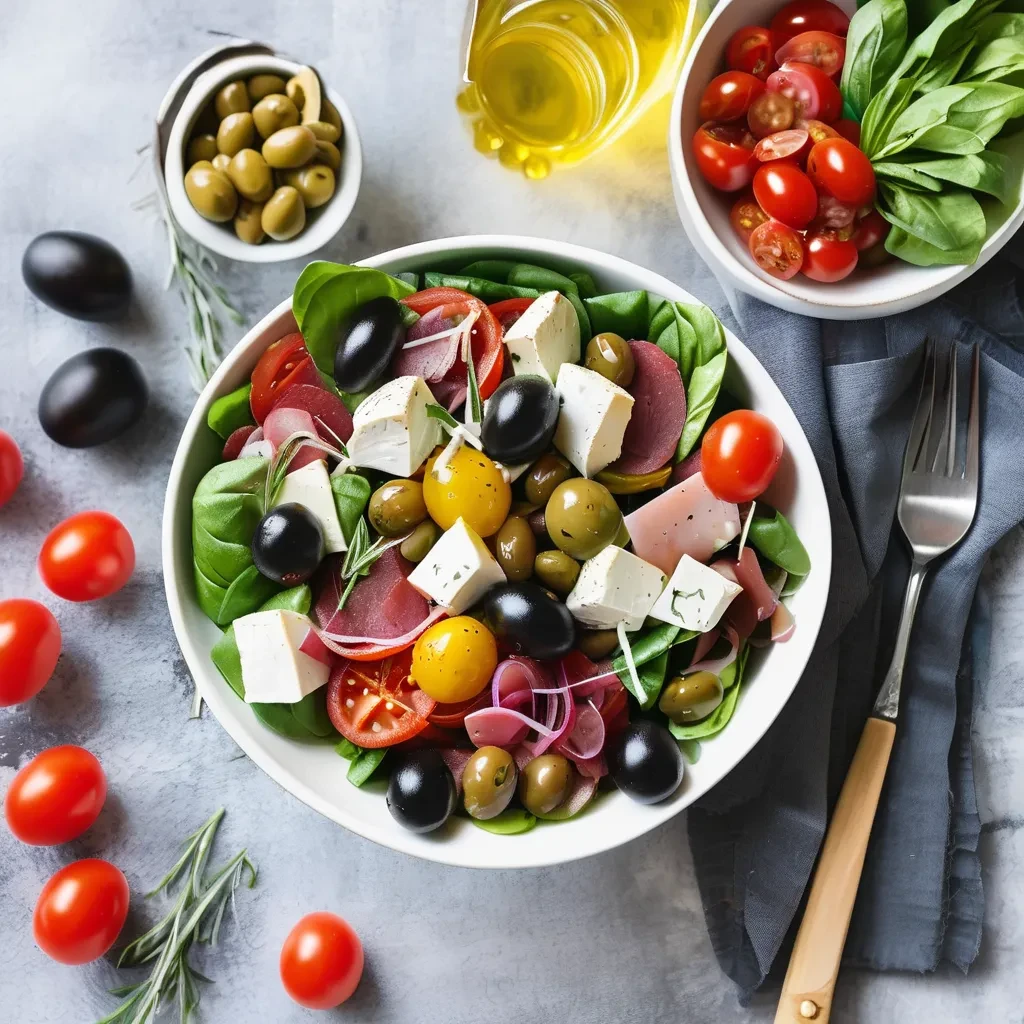
Serving Suggestions For Antipasto Recipe
Antipasto is a fantastic starter that can be served in a variety of ways to enhance any gathering. Here are some creative serving suggestions that will impress your guests and elevate your dining experience:
- Charcuterie Board: Arrange an assortment of cured meats, cheeses, and colorful accompaniments like olives and marinated vegetables on a large wooden board. This rustic presentation not only looks stunning but also encourages mingling as guests help themselves, creating a relaxed and inviting atmosphere.
- Appetizer Skewers: For a fun and portable option, thread ingredients onto skewers. Use a mix of olives, cherry tomatoes, mozzarella balls, and slices of salami or prosciutto. These bite-sized skewers are perfect for cocktail parties and make it easy for guests to grab a quick snack while socializing.
- Antipasto Salad: Transform traditional antipasto ingredients into a fresh salad. Combine mixed greens with roasted peppers, artichokes, and chunks of cheese, drizzling with a tangy vinaigrette. This adds a refreshing touch to your meal and can serve as a light main course or side dish.
Incorporating these serving styles not only showcases the variety of antipasto but also enhances the dining experience by encouraging interaction and enjoyment.
Variations For Antipasto Recipe
Antipasto is wonderfully adaptable, allowing you to customize it to fit different tastes and dietary preferences. Here are some delicious variations to consider:
- Mediterranean Twist: Give your antipasto a Mediterranean flair by incorporating Greek ingredients such as feta cheese, kalamata olives, marinated artichokes, and roasted red peppers. This variation adds a vibrant color palette and fresh flavors that will transport your guests to the shores of the Mediterranean.
- Vegetarian Delight: Focus on seasonal vegetables to create a vegetarian antipasto platter. Include roasted zucchini, grilled eggplant, stuffed bell peppers, and an array of flavorful cheeses. This version not only caters to vegetarians but also showcases the bounty of fresh produce available throughout the year.
- Seafood Antipasto: For a coastal twist, consider a seafood antipasto featuring shrimp cocktail, smoked salmon, marinated octopus, and anchovies. Pair these with capers and lemon wedges for a refreshing take that highlights the ocean’s bounty and adds an elegant touch to your appetizer spread.
These variations offer exciting alternatives that can cater to different tastes, ensuring that your antipasto remains a delightful experience for everyone at the table.
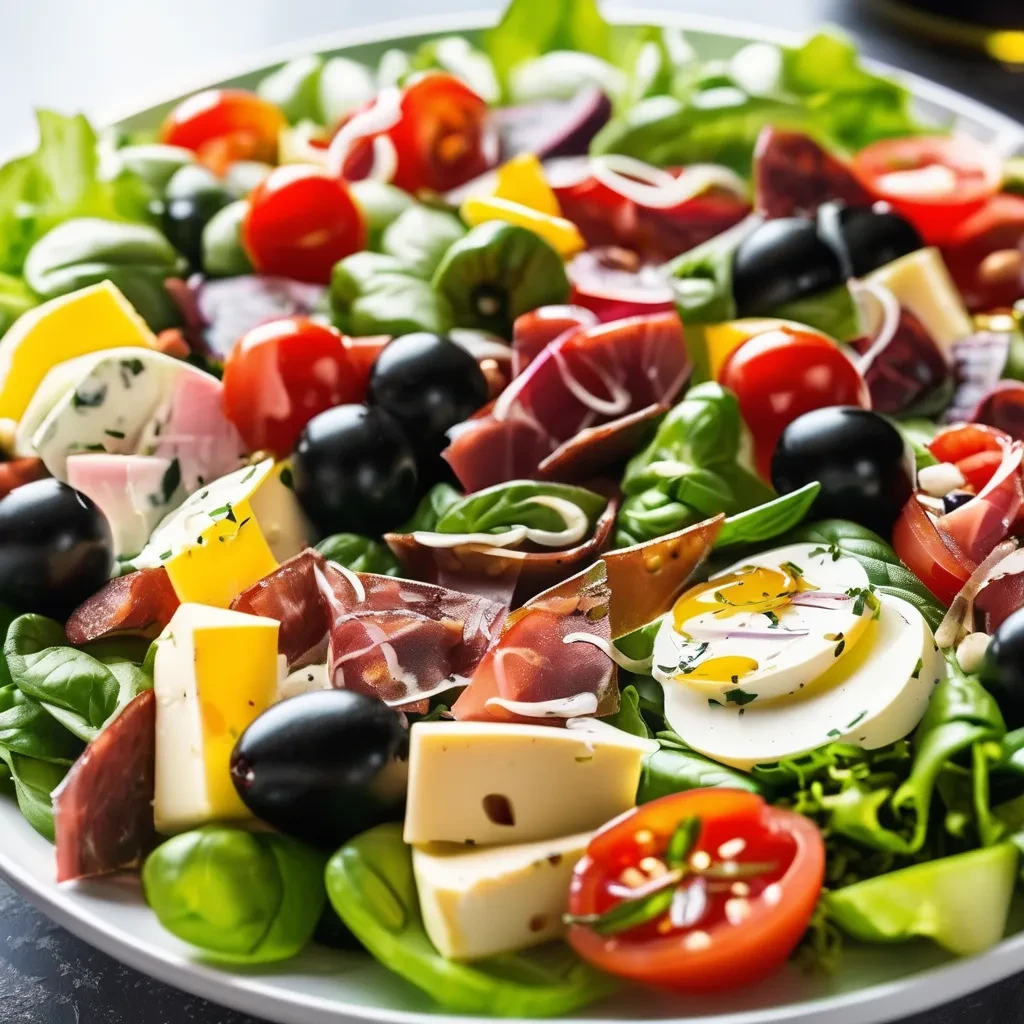
Storage and Shelf Life For Antipasto Recipe
Proper storage is essential to maintain the freshness and quality of your antipasto. Here are some guidelines to help you keep it delicious:
- Refrigeration: Once prepared, this salad should be stored in an airtight container in the refrigerator. Most ingredients, like cheeses and cured meats, will stay fresh for about 3 to 5 days. However, if you include ingredients like fresh vegetables or salads, they might only last 1 to 2 days before wilting.
- Separation of Components: If you plan to store this salad for an extended period, consider separating the components. Cured meats and cheeses can be kept in one container, while marinated vegetables and olives can go in another. This helps prevent moisture from affecting the quality of the meats and cheeses.
- Freezing: While it’s not recommended to freeze this salad as a whole, some components can be frozen individually. For instance, you can freeze marinated vegetables or cooked seafood, but be aware that the texture may change upon thawing.
By following these storage tips, you can enjoy your antipasto at its best for several days.
Health Benefits Of Antipasto Recipe
Antipasto isn’t just a delightful treat; it also offers several health benefits due to its diverse ingredients. Here’s a closer look:
- Rich in Nutrients: salad typically includes a variety of vegetables, olives, and cheeses, which provide essential vitamins, minerals, and antioxidants. For instance, olives are rich in healthy fats and vitamin E, while vegetables like bell peppers and artichokes are high in fiber and nutrients.
- Source of Protein: The cured meats and cheeses in salad contribute a good amount of protein, which is vital for muscle repair and overall bodily function. This makes antipasto a satisfying option for an appetizer or light meal.
- Heart-Healthy Fats: Many ingredients found in salad, such as olives and nuts, contain monounsaturated fats that are known to support heart health. These fats can help lower bad cholesterol levels and reduce the risk of heart disease.
- Encourages Mindful Eating: Sharing a platter of salad can foster a relaxed dining experience that encourages mindful eating. Taking time to enjoy a variety of flavors and textures can enhance satisfaction and help prevent overeating.
With these health benefits, salad not only pleases the palate but also contributes to a balanced diet when enjoyed in moderation.
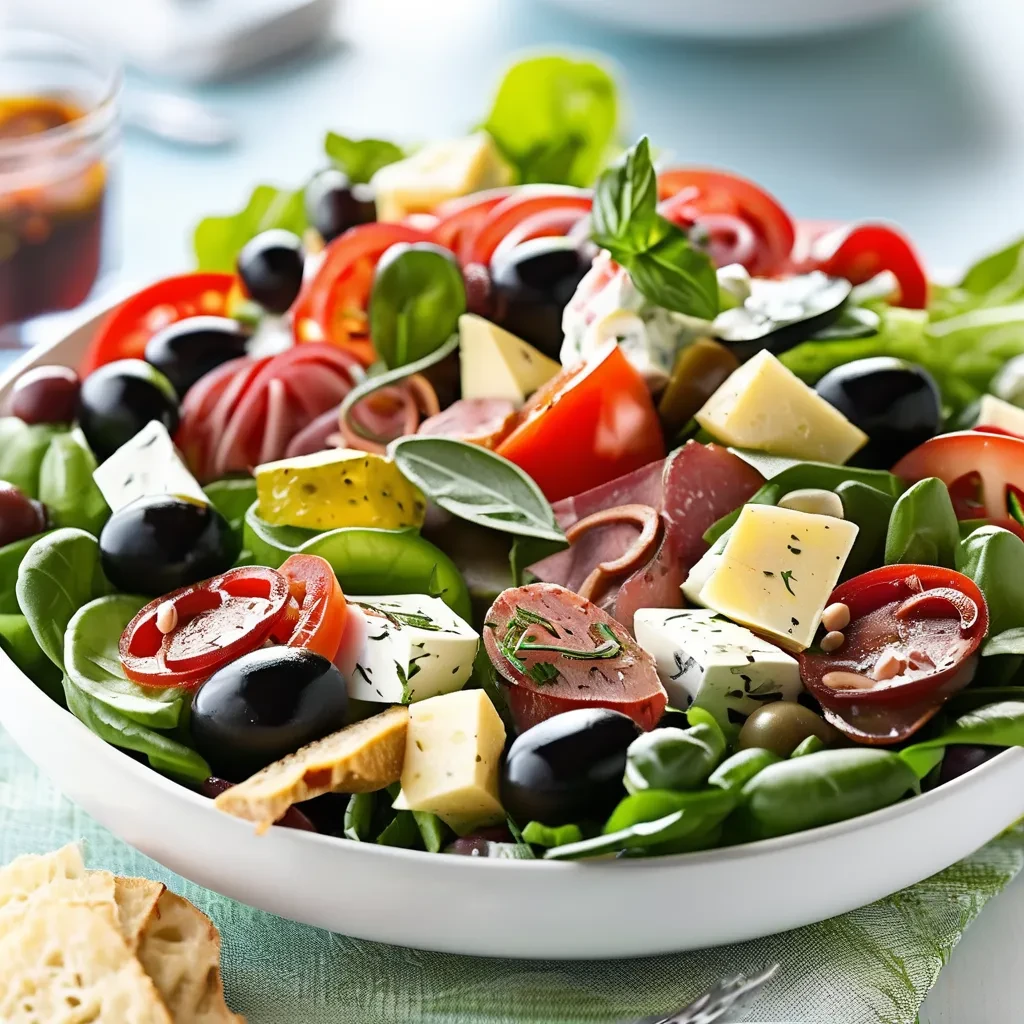
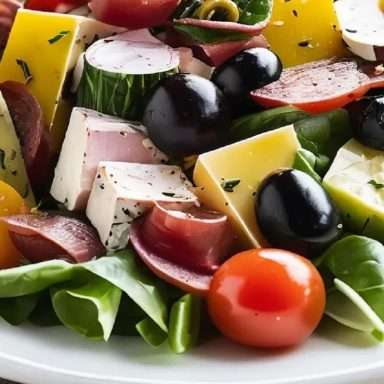
Antipasto Salad Recipe
Equipment
- Large wooden or ceramic platter
- Knife and cutting board
- Small bowls for dips or marinated items
- Skewers
Ingredients
Cured Meats:
- 4 oz prosciutto
- 4 oz salami
- 4 oz capicola
Cheeses:
- 4 oz mozzarella
- 4 oz aged Parmesan
- 4 oz goat cheese
Vegetables:
- 1 cup marinated artichoke hearts
- 1 cup roasted red peppers
- 1 cup assorted olives
Extras:
- 1 cup cherry tomatoes
- basil leaves
- Balsamic glaze
- Olive oil
Bread:
- 1 baguette
Instructions
- Prepare the Ingredients: Start by slicing the cured meats into bite-sized pieces or thin slices. Cut the mozzarella into cubes if using a large ball, and crumble the goat cheese if using.
- Arrange the Platter: On a large wooden or ceramic platter, begin arranging the cured meats. Fan them out or layer them for visual appeal.
- Add the Cheeses: Place the mozzarella, Parmesan, and goat cheese in separate sections of the platter, ensuring a balanced look.
- Incorporate Vegetables: Add the marinated artichoke hearts, roasted red peppers, and assorted olives around the meats and cheeses.
- Add Fresh Elements: Scatter cherry tomatoes throughout the platter and tuck in fresh basil leaves for a pop of color.
- Finish with Extras: Drizzle balsamic glaze and olive oil over the top for added flavor, if desired.
- Serve with Bread: Place sliced baguette or crusty bread on the side for guests to enjoy with the antipasto.
- Enjoy: Invite your guests to dive into the platter, encouraging them to mix and match the ingredients for a personalized tasting experience!
Related Video
Related Notes
- Quality Ingredients: Use high-quality meats and cheeses for the best flavor. Fresh mozzarella and artisanal salami make a significant difference.
- Presentation: Arrange the antipasto aesthetically, balancing colors and textures. A visually appealing platter enhances the dining experience.
- Chill Before Serving: Allow your antipasto to chill in the fridge for about 30 minutes before serving to let the flavors meld together.

